|
This weekend, we travelled to the Shenandoah Mountains with our "bubble family" for a much-needed getaway from Washington, DC. It took a little negotiation - even a short trip with kids requires a lot of luggage - but I eventually received authorization to stow a telescope in the trunk. There wasn't much room, so the telescope had to be small, and that left two options: the TV 85 or the Takahashi FC-100DC. I decided I wanted the extra reach of the Takahashi, so I unscrewed its focal extender - shortening and lightening it - and then found a way to make it fit with my lightest tripod. To my delight, our cottage turned out to have two balconies, both isolated from surrounding houses, and was just enough of a clearing in the trees to reveal a part of the night sky. That part, I soon realized, could not have been better placed: it would reveal the Ring Nebula and the Hercules Globular Cluster in the evening, and the Andromeda and Triangulum galaxies in the morning. Even better: the forecast called for clear skies on both nights we were there. What are the odds? On the first night, I stepped directly from my bedroom to the cottage's narrow, second-floor balcony. The air was alive with the squawking of birds and the buzzing of bugs. Luckily I brought plenty of mosquito repellant - although it was hard to forget about the legions of spiders spinning webs just overhead - and wow: what a night sky! Bortle 4, by one classification scheme; yellow or maybe green by another. It was, admittedly, not perfectly dark, but to this city slicker it was nothing short of a revelation. It's been so long since I've seen the Milky Way - but there it was, clearly visible. There were in fact so many stars that it was hard, for a moment, to pick out the constellations! Oh, what I've been missing in DC. To my surprise, Jupiter and Saturn both turned out to be high enough to view from the upstairs balcony. Saturn was beautiful, but I've had better views from the city. Jupiter, by contrast, was so clear and full of contrast - and, lucky me, I had tuned in just on time to see another shadow transit! To think that I'd never seen one before this month. Callisto, it turned out, had just finished traversing the planet, and its shadow was still in the clouds. The shadow seemed a bit more distinct - a bit more clearly round - than it had been on the surface of Jupiter with the APM 140 on the 10th, but I found I couldn't increase the magnification beyond 123x without the view breaking down. To my surprise, I also found that a new Delos 6mm eyepiece presented a clearly better view than my trusty Nagler 3-6mm zoom. Next, it was off to deep space. It has literally been decades since I had a telescope under a reasonably dark sky, and so it was such a pleasure to simply trawl through the Milky Way at low magnification, admiring the knots and clusters of random stars. Every patch of the galaxy, every view, resembled an open cluster from urban skies. Incredible. There are, I realized, deep space objects that look better under dark skies - that is, more of the same - and those that look different. The Ring Nebula, I realized when I finally look that way, mostly looks better. I could easily make out a ring without using averted vision, which I can't do with anything smaller than the APM 140 in DC. Yet I could also make out subtle nebulosity within the ring - a first for me - and the ring didn't look quite as round as it seems in the city. The Hercules Cluster, however, looked completely different: less a fuzzy ball and more an explosion of innumerable stars, textured and complex right down towards the center of the cluster. When I saw textured, I mean it was almost as though someone had sprinkled especially dense clumps of glitter haphazardly over a page already covered with a thinner dusting. An unforgettable sight. On the following night, I decided to sneak out in the morning, this time on the bigger, first-floor balcony so I could see more of the sky. I never have much time with how little my son sleeps, but I hoped to get a good view of two huge deep space objects whose surface brightness is just too low for urban skies - the Andromeda and Triangulum galaxies - before catching a glimpse of Mars.
Andromeda was impressive: a bright, fuzzy nucleus (of course) and a subtle but immense disk, stretching out of view even at 25x. I thought that maybe - just maybe - I could make out a dust lane after around 15 minutes of peering, but that might have been my imagination. At last I tore myself away from the view and started scanning for the Triangulum Galaxy, which I've never managed to spot before. After about 15 minutes I tracked it down, and wow - was it ever subtle. I could make out its pinwheel shape using averted vision, and that was incredibly special to me. At last, Mars became impossible to ignore. Snapping in the 6mm Delos I was treated to an absolutely spectacular view of the planet at 123x, featuring that southern ice cap, of course, surrounded by a ring of remarkably dark dunes, and the unmistakable peninsula of Syrtis Major Planum. I have never had such a detailed view of Syrtis Major, and what timing: the Perseverance rover will soon blast off to land at Jezero crater on the border of the region. To be honest, this view alone exceeded my wildest hopes for the Mars opposition of 2020. Amazing to think that the planet will only seem bigger over the next few months! Yet just as on the previous night, although the view was full of contrast at 123x it broke down when I pushed the magnification much further. I had high hopes for 185x with the Nagler Zoom, but no dice. After a while, it was time to pack up. I was sorely tempted to look at the Pleiades, then just wheeling into view, but I had to be ready in case my son woke up. I couldn't complain, of course; together, both nights were nothing short of unforgettable. I now know: there's nothing better than a fine telescope under dark skies. With regards to the rest of my setup, I was really impressed with a new purchase: that 6mm Delos eyepiece. Beautiful contrast, incredibly easy on the eyes, and a nice field of view. The 30mm TeleVue Plössl was less impressive - actually, it's long been my least favorite eyepiece in my Plössl collection. Stars seem a little stretched out away from the center of the eyepiece; at first, it's like they're not quite in focus, and then, towards the edge of the view, they stretch out into miniature arcs. I think I might need another kind of eyepiece for beautiful wide-field views under dark skies. All in all, a memorable trip, and a welcome relief from these COVID times.
0 Comments
In many cultures, in many times and places, bright comets were thought to herald - or perhaps cause, or confirm - disaster. It therefore seems almost absurdly fitting that, in this terrible summer of 2020, a naked-eye comet has appeared in our sky. I wrote earlier about failing to spot that comet - "NEOWISE" - in the morning, but it's rounded the Sun and is now visible in the evening - a much more convenient time for me to observe. This week I decided to make a concerted push to see it. I started with a pair of Nikon "Action Extreme" (ugh) 10x50 binoculars, on the 15th. After walking to our rooftop, I scanned the area south of the Big Dipper after sunset. The sky took longer to darken than I'd anticipated, but eventually, around 9:30 PM, I found NEOWISE. It's strange: this was my first comet sighting since Hale-Bopp way back in 1997, and it gave me a complex medley of emotions. On the one hand, it seemed a little underwhelming; Hale-Bopp and Hyakutake in 1996 had given me a wildly unrealistic frame of reference. I vividly remember seeing Hyakutake cover much of the sky, or Hale-Bopp's ion tail still visible at sunrise. By comparison, NEOWISE was a smudge - partly because it's dimmed since I should have been looking for it, a week ago. And on the other hand, what a thrill, nonetheless, to see a relatively bright comet; how exciting to receive such a vivid reminder that our Solar System is a restless and active place. On the 16th, I marched out again, this time with my Vixen ED115S. Several weeks ago, I tried to sell that refractor to afford my APM 140. I had a sale lined up, I thought, but the buyer kept asking for more discounts. Finally he asked for one more discount and posed a question that forced me to measure the telescope. When I did, I was struck by the beauty of the thing and declined to go lower - then sold some eyepieces instead. Thank goodness! The Vixen is just about a perfect telescope - it might actually be my favorite. As I've mentioned before, it's just the perfect size and weight for me, and perfectly well-balanced with its upgraded focuser. It provides just a bit more punch than the Takahashi can manage, and although it's heavier it's still very manageable. It's also, somehow, easier to use; the finder is in exactly the right place, the focuser is buttery smooth, and the handle makes it a snap to mount. Anyway, conditions could not have been worse on the 16th. Not only was it gusty, but the air was murky, thick with humidity, and thin clouds already covered much of the sky - with thicker clouds following in their wake. I scoured the horizon for that comet. Eventually I found it, peeking through high-altitude cirrus, further north than I'd remembered. Since it was already partly obscured, it looked only a bit brighter than it had using binoculars - but there it was, nonetheless, a bright little nucleus with a fan-shaped tail. Jupiter was rising, so I had a look before heading back downstairs. The seeing was terrible and haze covered the planet with a yellow veil, but still - the detail wasn't bad, considering. Then, miraculously, on the 18th conditions promised to be superb by DC standards: above-average seeing, according to ClearDarkSky, and above-average transparency, with not a cloud to be seen. I rumbled out of my building at 9:30 PM, with the APM in its giant suitcase. It soon dawned on me that I was more tired than I normally am; this was going to be a long, hard walk. After 15 minutes I was drenched with sweat and sore in a million places, but I'd made it to the park and covered myself with bug spray. I walked around and scouted out what I could see. Finally, I found a gap between houses that afforded me a good view of the comet, plainly visible with the naked eye but very close to the horizon. I had to set up in a far corner of the park to look through that gap, and the mosquitoes were worse there than they are in my normal spot. Still, I got a good view at last. I was struck by the brightness of the comet's nucleus relative to its tail - and struck, too, how little that tail seems to brighten with increases in aperture. The APM gave a clearly brighter view than the Vixen, let alone the binoculars, but the difference wasn't that great - not as great is it is when I view, say, the Ring Nebula. Still, the view was very satisfying - best with a 17.3mm Delos eyepiece at 57x, I decided. Higher magnifications did not seem to bring out any more detail in the nucleus, possibly because the comet had already neared the horizon. Using averted vision, I thought I could spot a hint of a halo surrounding the nucleus - more than the tail, that is - but that might have been my imagination. Either way, with the APM, a very fine comet; proportionally more elongated than Hale-Bopp, much shorter, of course, than Hyakutake, and far fainter but still aesthetically pleasing. When the comet got too low in the sky and the mosquitoes got too bad, I migrated back to my usual observing spot, where Jupiter and Saturn were rising to the east. When I had a look, however, I was shocked. The seeing was actually abysmal - some of my worst of the year. It was as though a southerly, high-altitude wind was rushing across my view, distorting and periodically compressing both planets. Jupiter still showed a good deal of detail in fleeting moments of greater stability, and the four Galilean moons all lined up made for a pretty sight.
But I was reminded again that you just can't count on ClearDarkSkies - or any tool based on our weather forecasts - to help you predict what the sky will be like. I enjoyed some of my best views this year - on May 31st, June 9th, and July 10th - when ClearDarkSkies predicted poor to average seeing, and some of my worst views when it predicted good seeing. In particular, seeing seems to differ in different areas of the sky, and you never know what those areas will be. On a mechanical front, I swapped my red dot finder for a right-angle finderscope on the APM, and that made a huge difference for the better. It's much easier to find things now with the big refractor. On the other hand, I also had a big more trouble using the telescope on my AYO II mount. I had to tighten the mount considerably to keep the telescope stable, which meant that it was harder to nudge along as I tried to keep up with the movement of the comet or planets. I might have been a little too impatient; maybe I should have worked harder to balance the telescope perfectly - but that balance does shift as I change eyepieces. At some point, I'll likely have to bite the bullet and buy a slightly sturdier (and heavier) mount. At least there's minimal wobbling after I do give a nudge. On another front, I suddenly realized last night that, after selling eyepieces to fund the APM, I suddenly have a dearth of high-magnitude eyepieces with a good field of view. When I can afford it, I'll need to invest in some more eyepieces. Or maybe I should sell more things I don't use? It never ends. To conclude, NEOWISE ultimately offered some memorable (if all too brief) views, and the refractors, as usual, acquitted themselves nicely. The good times keep coming! Another clear morning, with average seeing and above-average transparency. Astronomy and my toddler have been costing me sleep recently, and deep down I knew it wasn't a good idea to head out in the wee hours again. Yet there I was, waking up at 2:30 AM, gulping down four cups of coffee, and slipping out the door with three big bags. My cat watched me go with a knowing look. When I got outside, the night seemed nearly perfect. Not a single cloud in the sky - now that's rare - and the stars seemed remarkably steady. Mars was a brilliant red near the half-Moon; it's getting noticeably brighter, it seems, with every week. The temperature was perfect, and a gentle breeze made it even better. As the Earth warms, I figure, most of us will be spending more time walking in the night. I guess I'll be a veteran. When I got to the park, conditions somehow seemed even better. I couldn't see the Milky Way, of course - not in these urban skies - but the sky did seem unusually full of stars. Then, as I unpacked my trusty Takahashi refractor, it suddenly hit me: I'd left my stool at home. A cascading series of problems followed. I'd taken my little Report tripod, which can usually hold the Takahashi okay, but only when not fully extended. Well, I would have to extend it all the way without a stool, and even then I'd have to bend over a little to use the eyepiece - let alone the red dot finder. A pleasant early morning under the skies suddenly seemed a lot less fun. My worst suspicions were realized when I turned to Mars, now high above the eastern horizon. The tripod wasn't up to the telescope, and the view took a full four seconds to stabilize when I nudged the planet into view. That's an especially big problem because I don't currently have an eyepiece with a big field of view, so I have to keep nudging and nudging - which means more and more wobbling. There was so much wobbling, in fact, that I hard time perfectly focusing the telescope - a consequence, in part, of the Takahashi's lack of a two-speed focuser. Craning over my eyepiece, I suddenly felt let down by my equipment, for the first time in months. If only I'd brought that stool! What's worse, the seeing turned out to be surprisingly uneven. It guess that breeze was messing with the view. Admittedly, the view of Mars would have thrilled me a month ago: there was the southern polar cap, bordered (if memory serves) by dark dunes, and there - in fleeting moments of atmospheric stability - a delicate latticework of dark albedo features, spidering up from the pole. And yet, on the whole it was all a bit blurrier than I expected. The Moon was impressive, with gloriously crisp detail around Plato in particular. I thought I could maybe - maybe - make out a few craterlets, but it was hard to be sure with the view wobbling, my neck aching, and my knees buckling.
When I turned south to Jupiter and Saturn, I was shocked - for the opposite reason I had been just a day and a half earlier. Both planets were almost void of detail, the view entirely washed out by terrible - not just bad, terrible - seeing. I hastily turned back to the Moon and tried not to remember the view through the APM. After a while, Venus rose to the northeast, a glorious golden crescent very near blood-red Aldebaran. It was nice to see the Pleiades again, rising over the trees. I suppose it won't be too long before Orion makes it reappearance in the morning sky. A bright comet, NEOWISE (C/2020 F3) is visible to the naked eye just before sunrise - a sight we haven't had, I think, since PANSTARRS (C2011/L4) in 2013, and Hale-Bopp (C/1995 O1) in 1997. Unfortunately, I couldn't stay out long enough to see it. I fervently hope it survives its pass by the Sun so I can catch it in the evening sky within a week or so - clouds permitting, of course. I walked home knowing it would be a very long day with very little sleep. Had it been worth it? If only I'd brought my stool, then certainly. But now . . . at least I'd gotten another good view of Mars. It's hard to imagine what it will look like in just a few months! It's been quite a stretch of clear nights in these parts - as I wrote before, DC is a feast-or-famine city for amateur astronomers - and I've been determined to take full advantage. Last night, I hauled my APM 140 out the door for what I hoped would be an hour of deep space urban observing. As I embarked on the 15-minute walk to the park with, what, sixty pounds worth of equipment, I fretted about a fleet of clouds flitting by overhead. When I got to the park, however, the clouds had largely passed, and although I was drenched with sweat after all that hauling I was more or less ready to go. I was curious to see what the APM could do with no Moon in the sky. The first thing I noticed is that transparency wasn't great, but also that stars were pinpoints almost immediately. Although the difference in temperature from inside to outside wasn't great, I was still impressed that the telescope acclimated just about instantly. The Ring Nebula is almost comically easy to find these days, so I started with it. I could see a clear ring with no averted vision - always nice - but I can't say the view was much brighter then it had been a few days back, when the Moon was out. Still, a nice way to start the night. Next, I tried to track down some globular clusters in Scorpio, then rising out of the worst of the city's light pollution to the south. The double star Al Niyat was a gorgeous sight, but the globulars - M4 and M80 - were underwhelming. I abandoned the effort and switched to simply admiring some bright stars for a while, beginning with Antares. This, to my mind, is a principal difference between refractors and other kinds of telescopes. Stars look so much more beautiful - more natural - through refractors, in a way that's hard to explain. It's something, I think, about the size and color of the "disk." I decided to see if I couldn't track down the Whirlpool and Pinwheel galaxies around the Big Dipper. After spending about five minutes in futility, it suddenly dawned on me that the year was far enough along for Jupiter and Saturn to be rising in the evening sky. Sure enough, when I moved out of the shadow of a tree there they were, high enough already to observe. I didn't expect too much; they were still quite close to the horizon, after all. But when I turned to Jupiter I just about fell off my stool. There, on the limb of the planet, was the pitch-black shadow of a Galilean moon. And there, framed by Jupiter's North Equatorial Belt, was the moon: Europa, if I'm not mistaken. Suddenly the seeing stabilized, and wow: I've never seen so much detail and color on the planet. It was like viewing a Hubble image, at a little distance, while squinting ever so slightly. The Galilean moons were actual disks, not just points of light, though I couldn't see their color, let alone any albedo features on their surfaces. The seeing, I judged, was good but not great. But the telescope! What a thrill to observe the planet with a nearly six-inch refractor. When I turned to Saturn, I was nearly as impressed. The planet just had such a satisfying color through the big refractor: a creamy, buttery pale yellow, with mottled bands of grey cloud. Again, there was a space telescope - or maybe space probe - kind of feel to the image, a three-dimensionality and intricacy of detail that I've rarely seen before. I swung back to Jupiter. As I watched, Europa's shadow vanished in the limb of the planet, and the moon itself started to edge into black space. Then, the Great Red Spot rotated into view - and above it, on the northern hemisphere of the planet, an even darker mass of clouds. When the atmosphere really settled down, every cloud belt and zone was just absolutely full of delicate detail. What a thrill. I could have stayed for so much longer, but I knew it would be just four or five hours before my toddler woke up, and I had to get what little sleep I could salvage. What a memorable night! I've always wanted to be able to see real change on Jupiter - to observe the true dynamism of the inconstant planet. Finally, I had the chance to see the best the planet has to offer in real-time. I can't imagine any of my other telescopes would have shown me as much; the Takahashi might have come close, but not with so much color. I never imagined I'd be able to use such a big refractor before having a backyard. As I lugged the telescope back home, I couldn't stop thinking: it's so worth it for even one special hour with the giant planets. It's hard to properly celebrate Independence Day this year, though that didn't stop the jet fighters and the bombers from roaring overhead yesterday evening. Fireworks followed - hours and hours worth - but I was more interested in the other parts of the sky. At 11:45 PM, I set off to view the "Buck Moon" - and maybe, just maybe, catch a sight of what promised to be a very subtle penumbral lunar eclipse. I decided to take my trusty TV 85. Clouds were closing in, and so I wasn't sure what to expect when I reached my park. Five minutes of viewing? A full hour? It didn't seem worth it to take a larger telescope. Plus, after all those sleepless nights lately - and full days of work and childcare - I was too tired to lug anything bigger. When I reached the park, I realized, first, that Jupiter and Saturn are now quite high in the sky even at midnight, and second, that seeing was really quite good - better than it had been on July 2nd and 3rd. I realized, too, that I couldn't spot a lunar eclipse, but that the hazy sky had adorned the Moon with a beautiful golden tint. And wow, was it bright. After a few moon-free early mornings, it was strange to see my telescope cast a shadow in the park. It was a strange atmosphere last night. While seeing was quite good, the air was hazy, almost watery. The Moon in particular looked like it was made of liquid: a giant and intricately-detailed bubble. Still, what a sight. Tattered clouds swept by from time to time, and just before I packed up a distant bat fluttered directly across the lunar surface. Like something from a Dracula movie. Turning to the planets, I was again impressed by the TV 85 (a recurring theme on this website). At modest magnifications, the little refractor really is a match for any other telescope I've owned. Jupiter's great spot was plainly visible, and so were dusky clouds on Saturn - and the Cassini Division, winding all the way around those rings. In moments of especially good seeing, Jupiter's surface was thick with intricate detail. Of course, the view of both was a good deal dimmer through the TV 85 than it is through the APM 140, and the colors were more muted than they are even with the Takahashi, let alone the APM. I tried increasing the magnification last night to almost unusable levels to dim the view enough to get a decent picture with my iPhone. I succeeded, at least, in taking my first blurry picture of the great red spot - but, as always, I lament the quality of those phone pictures. Part of me wished last night that I had had the energy to haul out a bigger refractor. That concerned me a bit. My Takahashi is not much heavier; would I always feel this way when I set out with the TV 85? Even so, you can't go wrong with the little scope - and I left the park satisfied, despite the prospect of a measly four hours of sleep. There's nothing like a fine refractor on a moonlit night.
Rocking a fussy baby is a dangerous thing. The mind latches on to anything that can distract from the crying, and for me that means telescopes. Could I really use my Mewlon 180, I wondered lately? The telescope is beautiful, but it takes at least an hour to cool down - about as long as I often have to observe. And would I really feel comfortable collimating it in a park? Could I even haul it to a park in the handsome but bulky carrying case I bought for it? The answer to all these questions, I ultimately decided, was no. At the same time, I happened across a new telescope model: a 140mm refractor made by a German company, APM. At just under 20 pounds, this telescope is remarkably lightweight for a 5.5" refractor, and because it's a doublet - meaning it has two lenses - it cools downs quickly. Color correction is also excellent - maybe not quite as good as my Takahashi FC100, but on par with my TV 85 - and a sliding dew shield means the whole assembly is quite compact. Quality control is so good that the telescopes can ship with strehl reports, meaning you know exactly what effect unavoidable wavefront aberrations will have on image quality. The price, meanwhile, is unbeatable for a big apochromatic refractor. I couldn't help but think that the APM would work much better for me than my Mewlon, especially as I've gotten used to those pinpoint refractor stars. Once the idea was in my head, as usual, I couldn't shake it. I sold my Mewlon and a few eyepieces - including my cherished Ethos - then bought a rarely used, second-hand APM with an unusually high strehl of 0.958. To my surprise, the big telescope rides quite easily on my AYO II mount. I had been told that the mount can't quite handle refractors with similar apertures, such as the TEC 140. But if I balance the refractor just right, it does fine - provided I don't use a heavy eyepiece. Which, hey, I had to sell to buy the telescope anyway. Although I promised myself after June 9th that I'd only take a telescope out in the early morning if the seeing seemed above average, by July 1st I couldn't wait any longer. Both seeing and transparency promised to be below average on the morning of the 2nd, but the sky was clear and I wanted to test the refractor. I went to bed at 10:30 PM, woke up at 2:30 AM, and was out the door at 3:05. I'd bought a large soft case to haul the telescope and all my equipment except my mount, and it certainly made it much easier to walk the 15 or so minutes to my new favorite observing site. When I got there, however, my arm was nevertheless ready to fall off. This urban observing location is really special: screened by bushes in a large park that I have permission to use at night. As on the 9th, I was surrounded by rabbits and fireflies, and by 4 AM a cacophony of birds started calling all around me. The nearby trees are alive with noise - not bird calls, but animals moving through them. An army of squirrels? A flock of pterodactyls? Either way, it's a memorable experience being out there in the early morning. Turning to Mars, the image was clearly brighter than what I observed through the FC-100DC on June 9th, but also softer with a bit more light scatter. Nevertheless, that southern polar cap and some delicate dark albedo features were clearly visible. Switching to Jupiter and Saturn, it was clear that poor seeing and to a lesser extent transparency, not the optics of my telescope, would limit my morning views. Both planets had more color than they do through my Takahashi, and I could see a whole family of moons around Saturn - always a thrill. Even at high magnifications, the view remained bright - another step up over the Takahashi. Yet I couldn't really push past 100x and still see detail; the seeing was just not good enough. Still, the great red spot was as obvious as I've ever seen it. I wanted to have a look at the Ring Nebula to compare the light gathering capacity of the APM to my other refractors. With so much light pollution in the muggy sky, the nebula still seemed faint. But I could clearly make out a ring without using averted vision - a first for me. Then, at around 4:15 AM, I noticed a bright light on the eastern horizon. Was it a plane? Or could it be Venus? I had a look, and yes - there it was, a delicate golden crescent. I've never seen Venus look so beautiful; a mesmerizing sight that defied all my iPhone attempts to take a picture. Walking back was another huge chore, and when I returned I noticed that the wheels on my case already had some wear and tear. Still, I thought the telescope acquitted itself very well. The only false color I detected, I think, was a function of seeing. Stars were, of course, pinpoints. The view was noticeably brighter than it is through my Vixen - about as bright as it was through my dearly departed C8, I figured. Thermal acclimation was nearly instantaneous. The mount was sturdy, with vibrations at well under two seconds. This telescope is a keeper. On the evening of the 2nd, I realized that the sky would be clear again on the morning of the 3rd - except now the seeing and transparency promised to be average. Could I really function for a second day on four hours of interrupted sleep? Yes, I decided I could - and there I was again, in the park by 3:30 AM. This time I brought my Takahashi. I didn't have the energy to lug out my APM on so little sleep, and I wanted to compare the view through the FC-100DC with what I'd had with the APM. Mars was, once again, my first target. I had been a little disappointed with the view of Mars through the APM, although to be honest I would have been blown away had it not been for that magical morning on June 9th. Now, using the Takahashi again, I realized that the view on the 9th was a function of good seeing and good transparency - and a great little telescope, of course. The view on the morning of July 3rd was similar to what I'd had using the APM on the 2nd, albeit less bright and with a bit less scatter (possibly owing to better seeing). The south polar cap was easily visible, and some dark albedo features too - a fine view, but not comparable to what I saw on the 9th. When I turned the telescope south to Jupiter and Saturn, I was surprised: the seeing in that part of the sky was actually worse than it had been on the previous morning. Jupiter in particular was a hot mess, with nothing visible aside from the most obvious belts and zones. I could just make out the Cassini Division on Saturn, and I actually got some half-decent iPhone photos. Saturn photographs much better than the other planets largely because it's fainter. My phone washes out all detail on brilliant objects on a black background, so Jupiter especially almost always comes out as a bright white ball - except in those especially blurry moments, while taking a video, in which the picture just passes into or out of focus. In general, views of Jupiter and Saturn were worse using the Takahashi than they had been with the APM, but a lot of that comes down to a slight difference in seeing. I would say that, with the focal extender, the Takashi probably gives slightly sharper but less colorful and somewhat dimmer views. With that said, the difference in brightness on the planets was less than I expected; the Takahashi puts up a hell of a fight against any telescope, it seems.
Turning to the Ring Nebula, the picture was very different. In subpar transparency - the forecast lied - the nebula was only barely perceptible at all. I needed averted vision to see a ring, and then again - just barely. I guessed that the view with the APM was twice as bright, a gigantic difference, of course, when it comes to observing deep space objects. Once again, Venus loomed on the horizon when it was time for me to start thinking about packing. Once again, the view was glorious - and the iPhone washed out all details (ditto for Mars). Oh well - I took a shot anyway, and now it's on this website. Somehow, even terrible pictures help me remember the wonder. Dodging crowds of rabbits, I made my way home. The lack of sleep hurts, but I'll cherish these early morning memories. And I sure am happy to have another telescope in the fold. |
Archives
March 2024
Categories
All
|
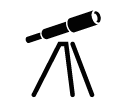
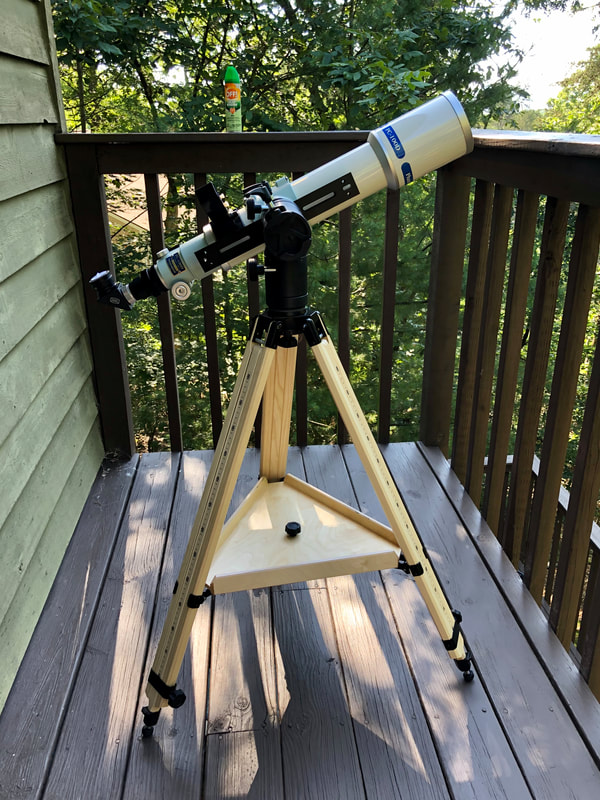
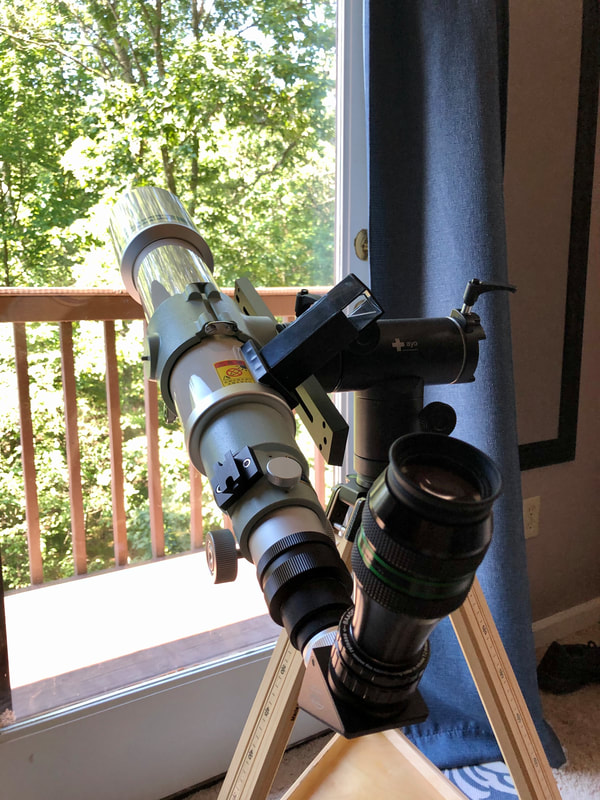
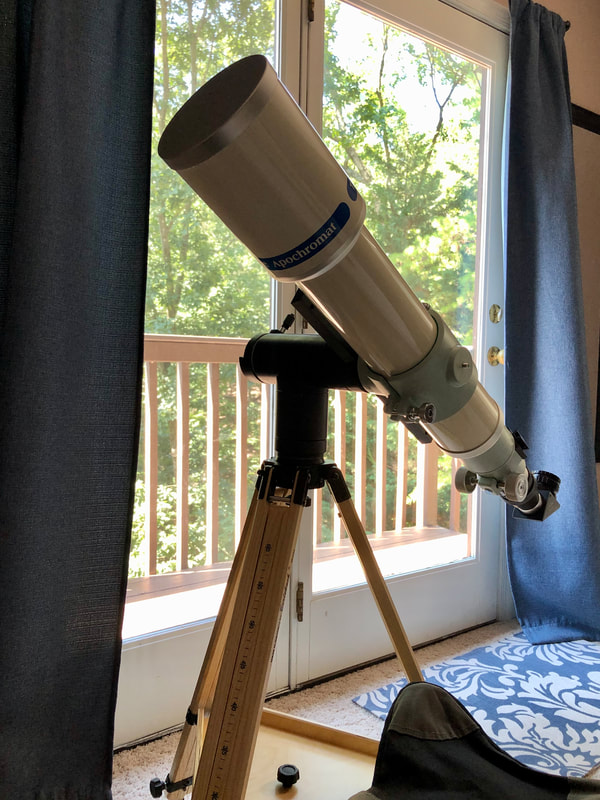
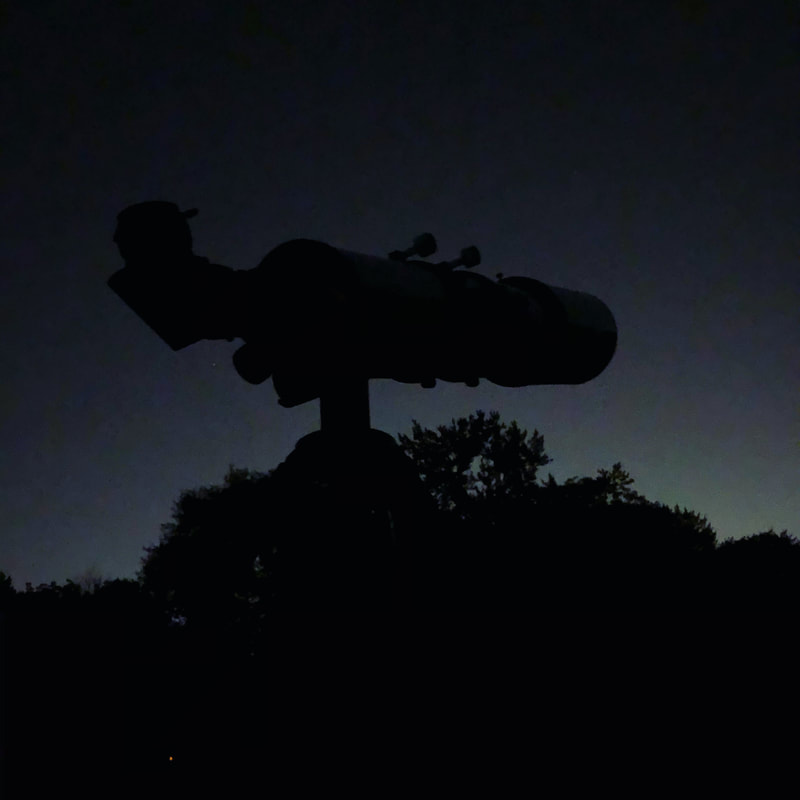
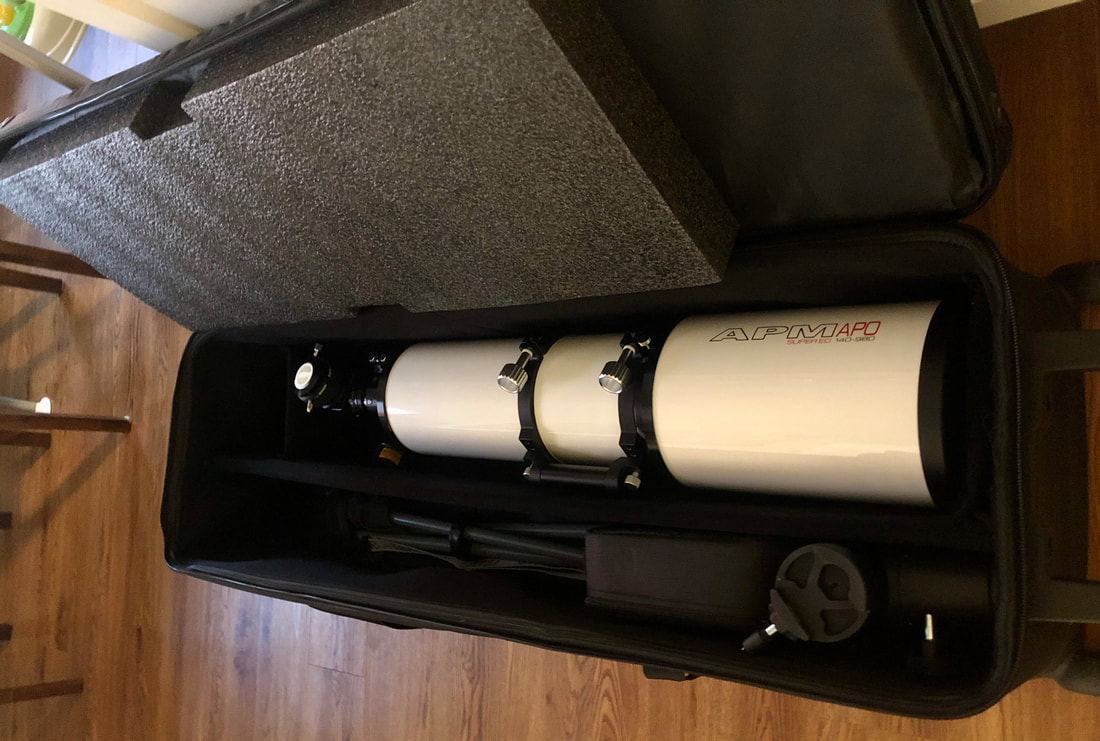
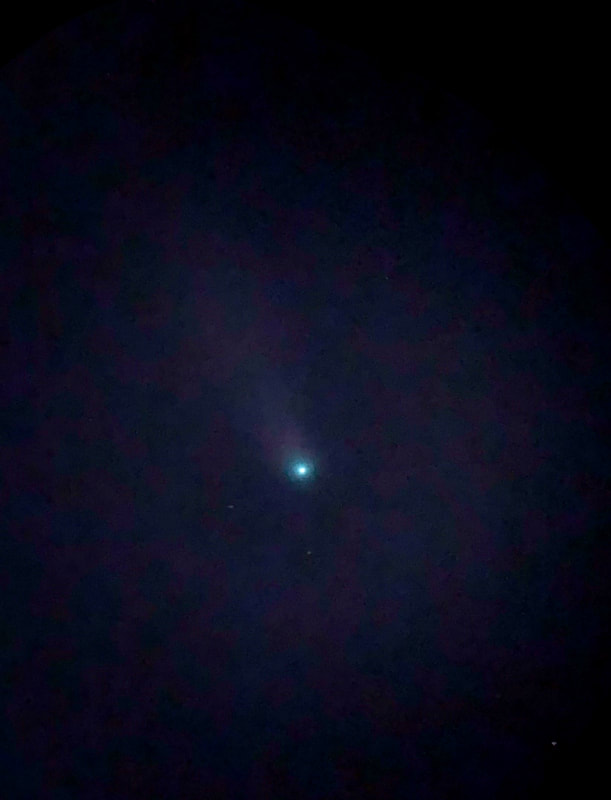
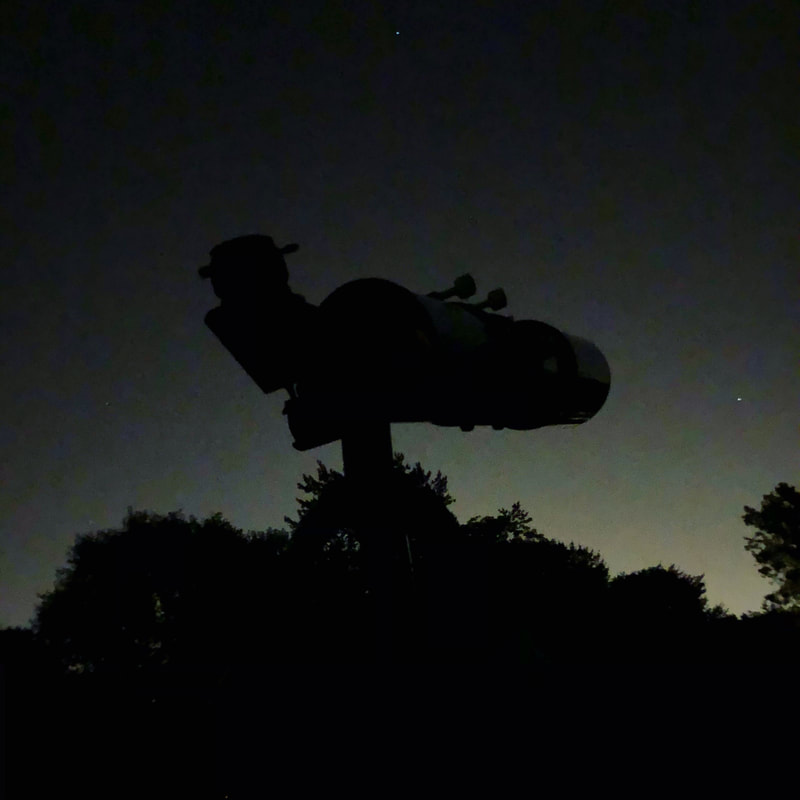
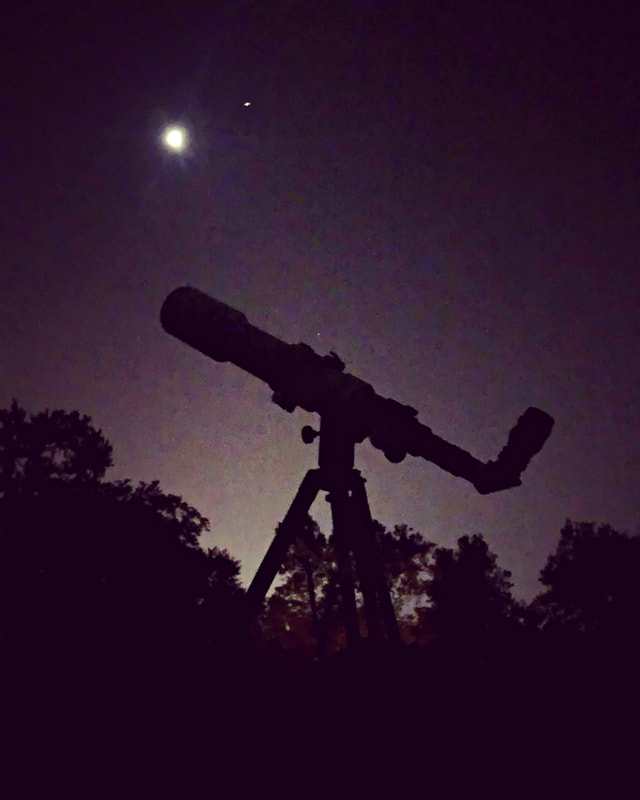
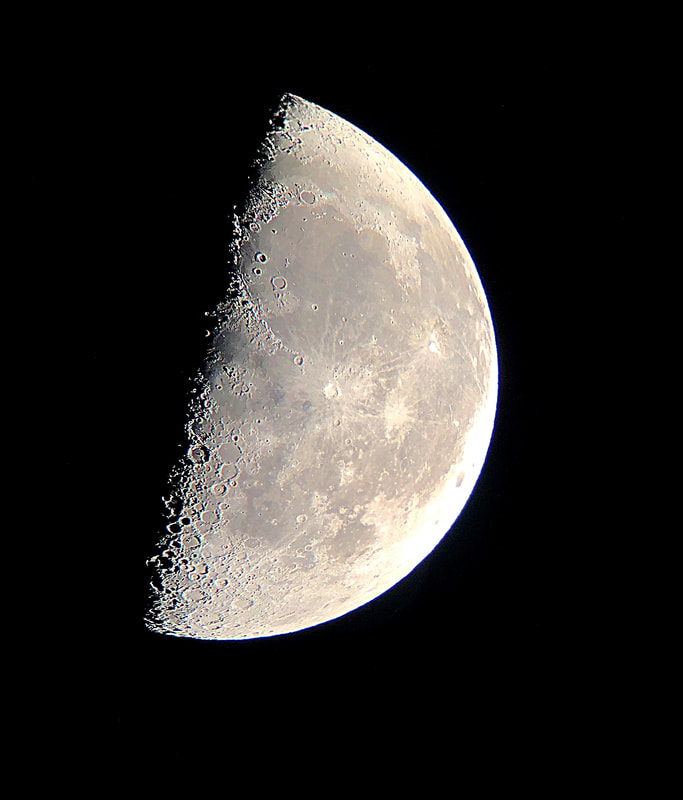
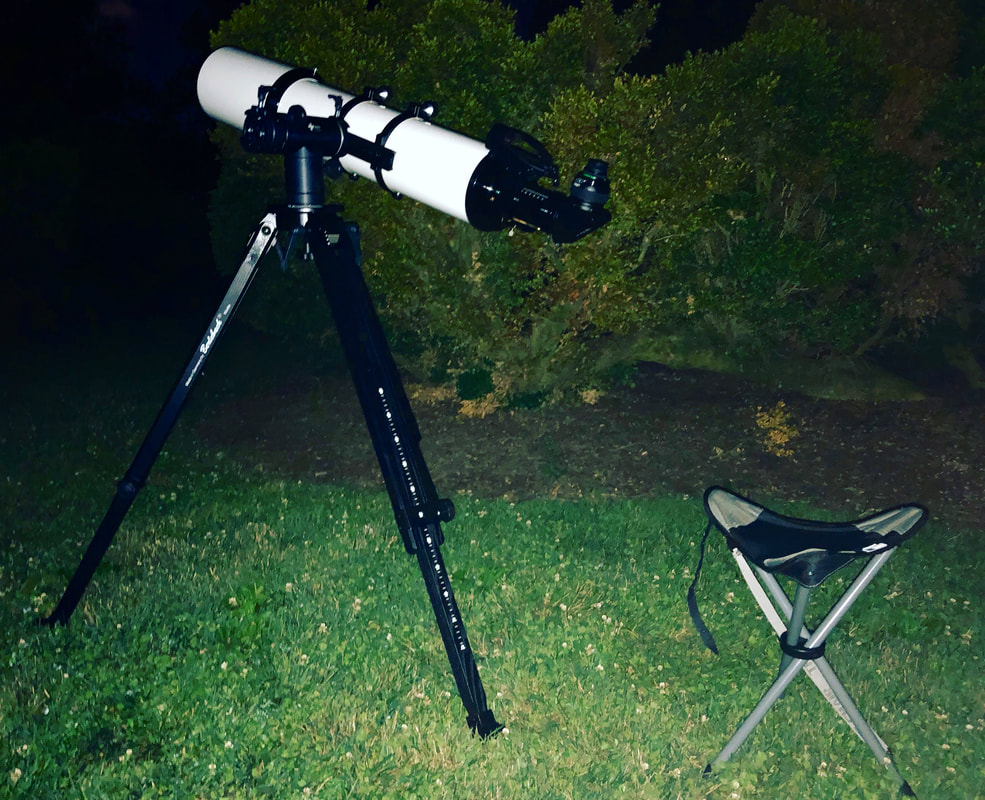
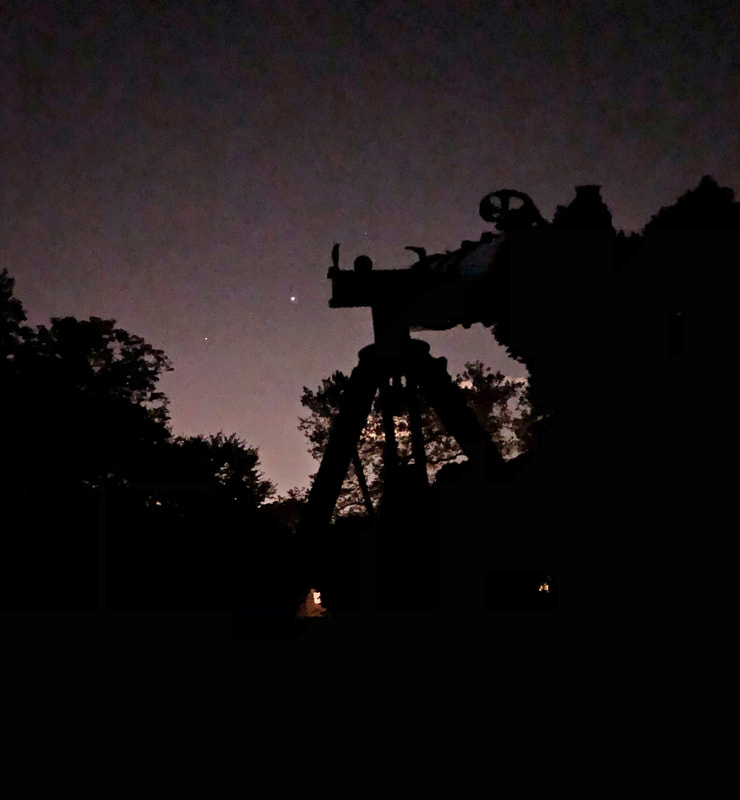
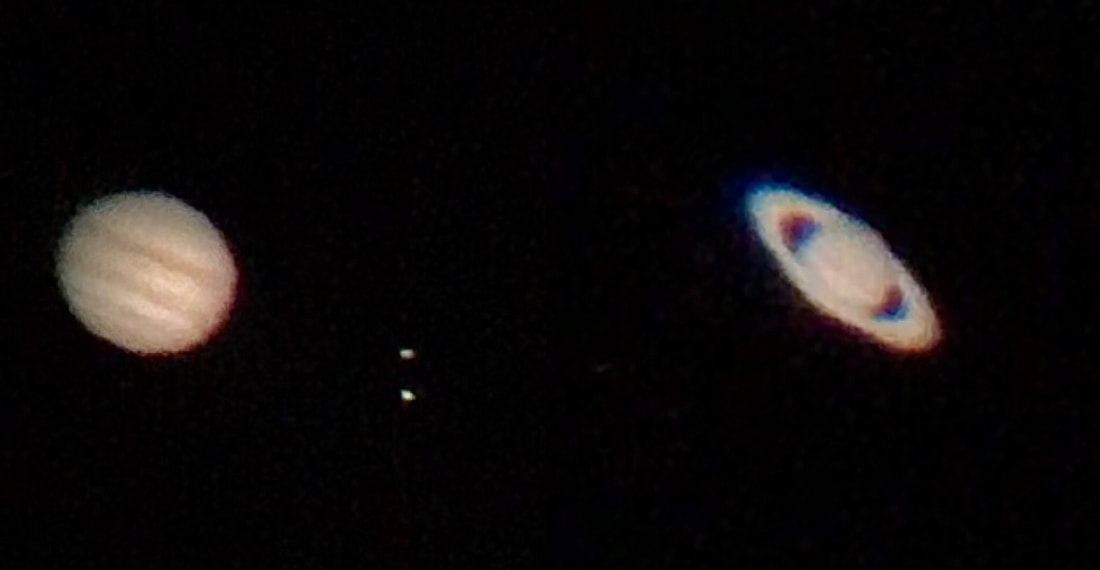
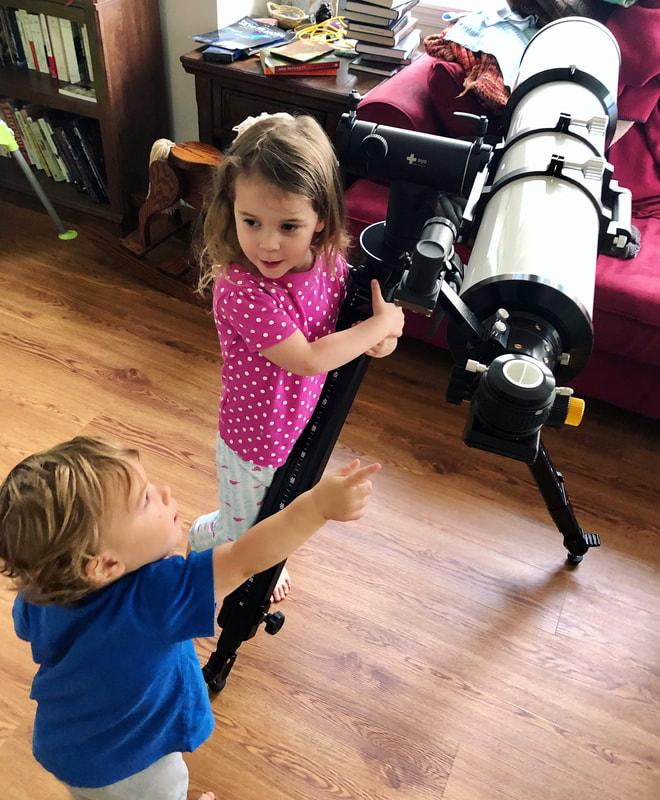
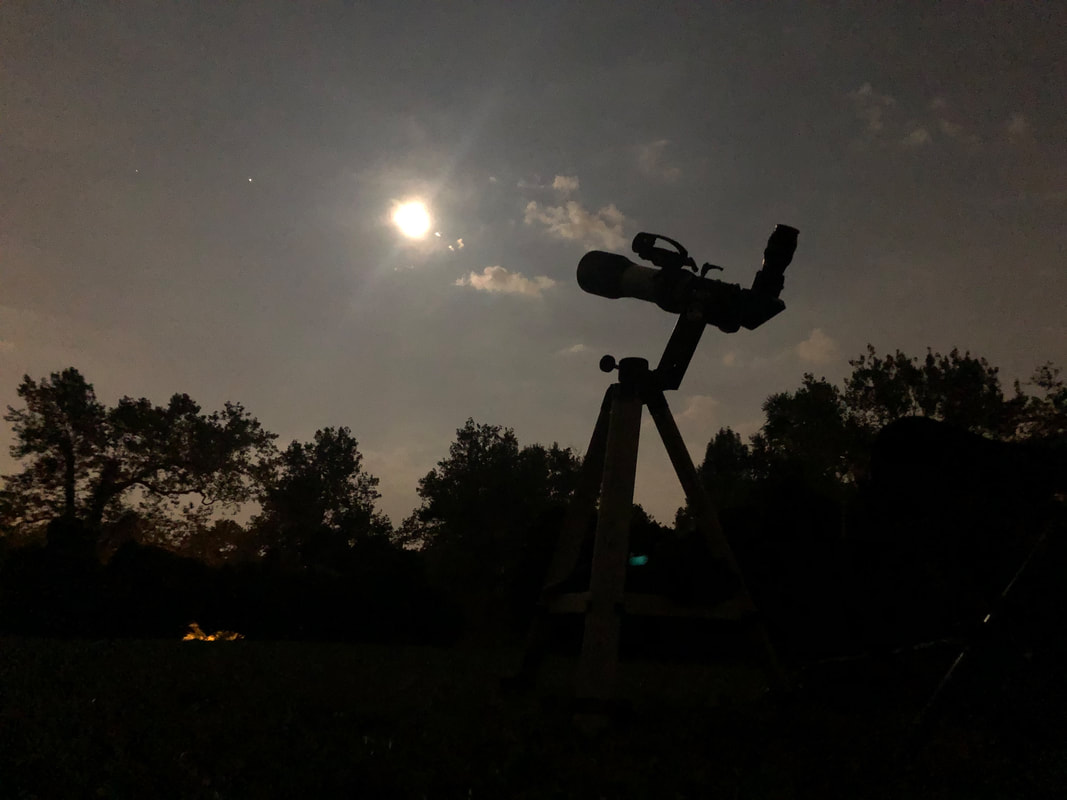
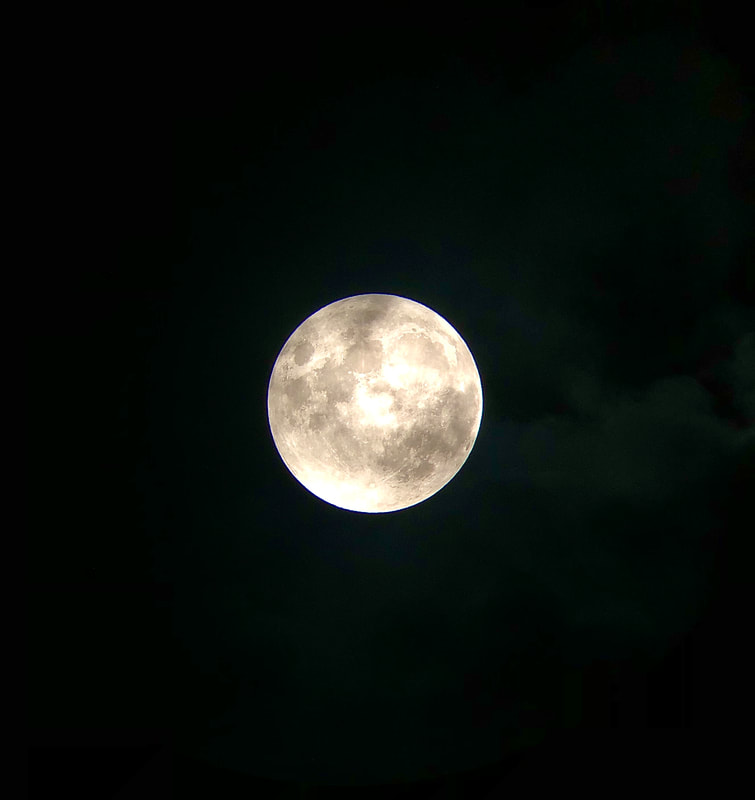
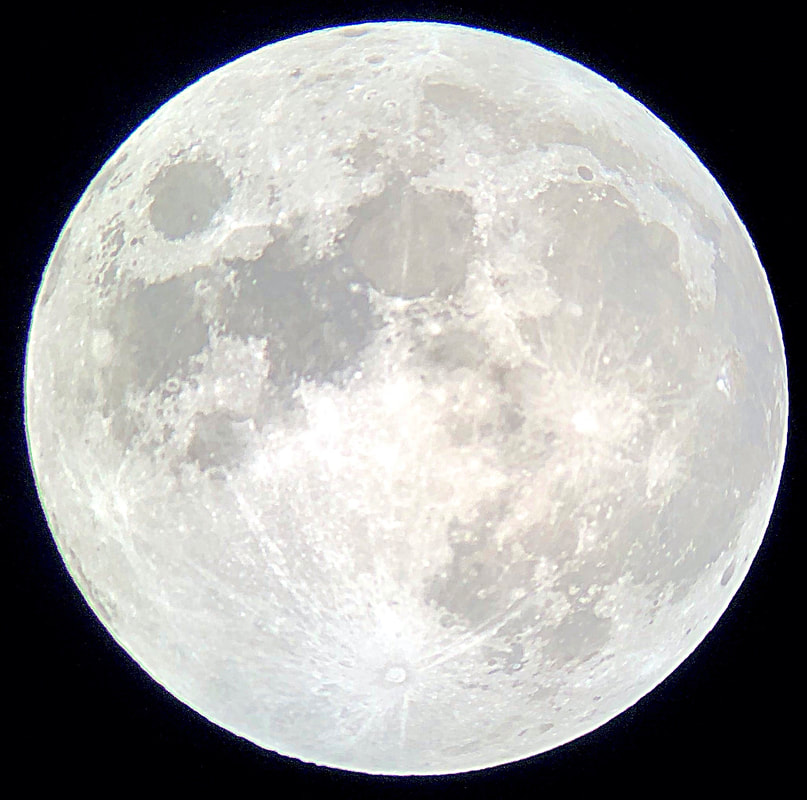
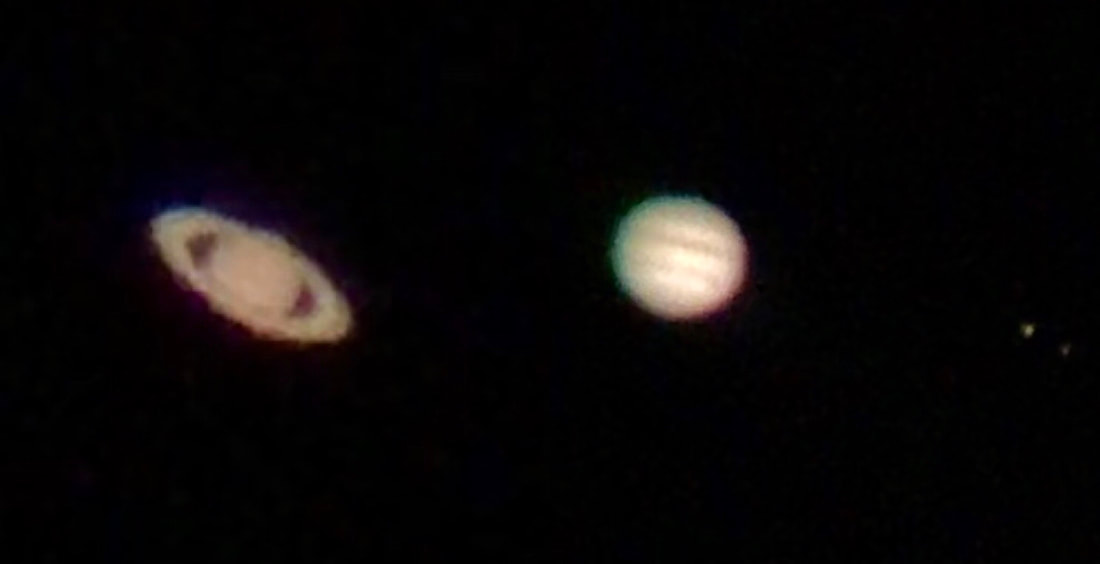
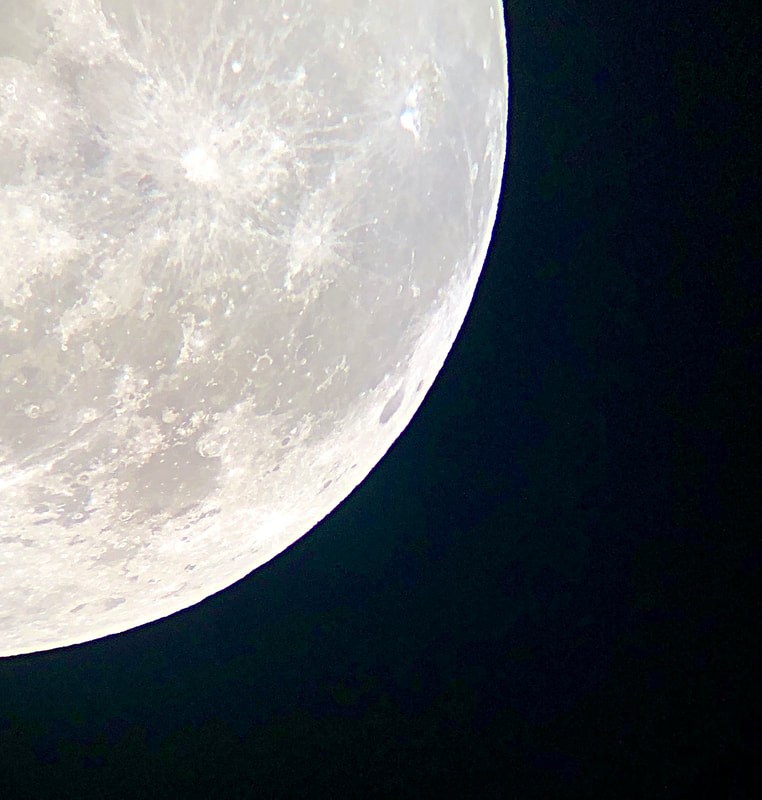
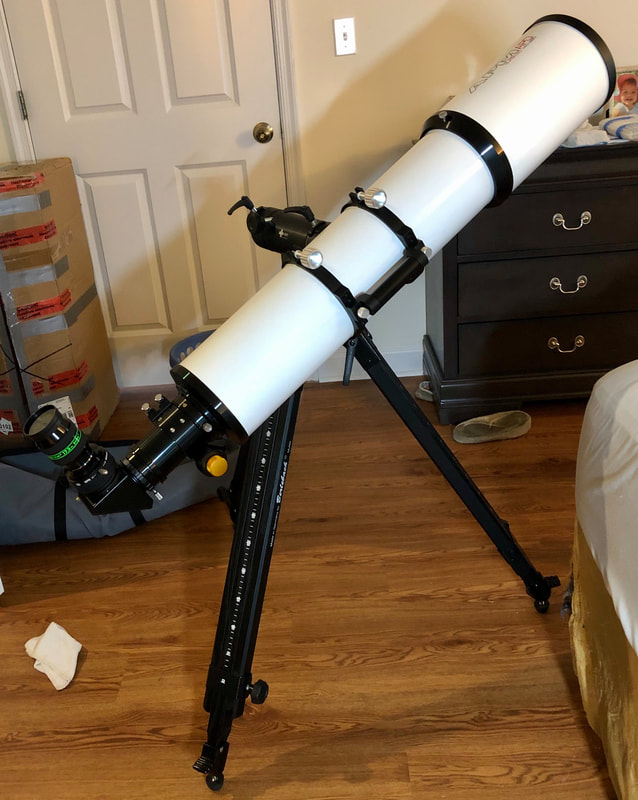
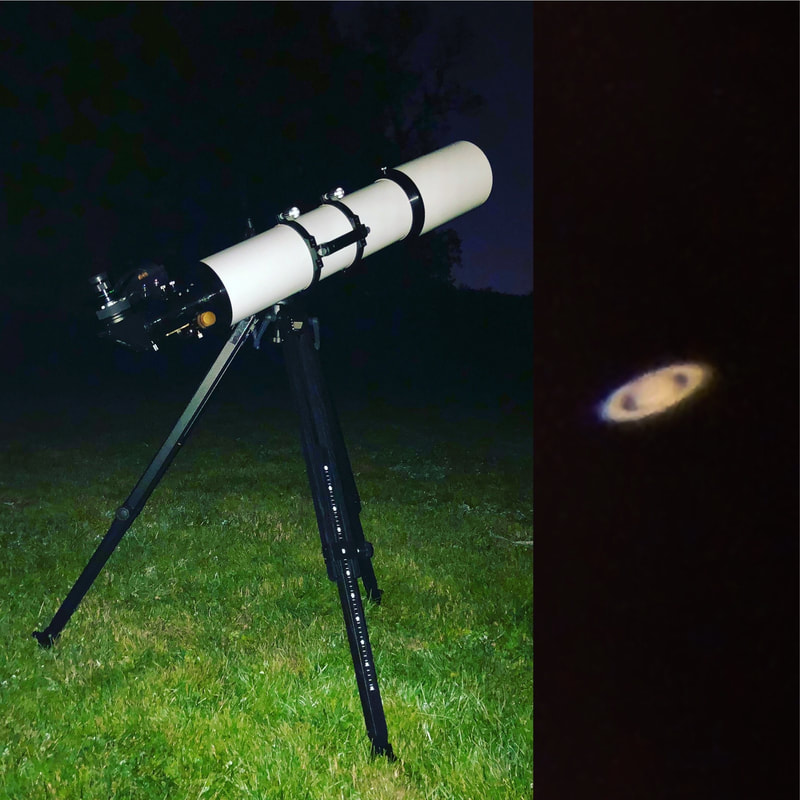
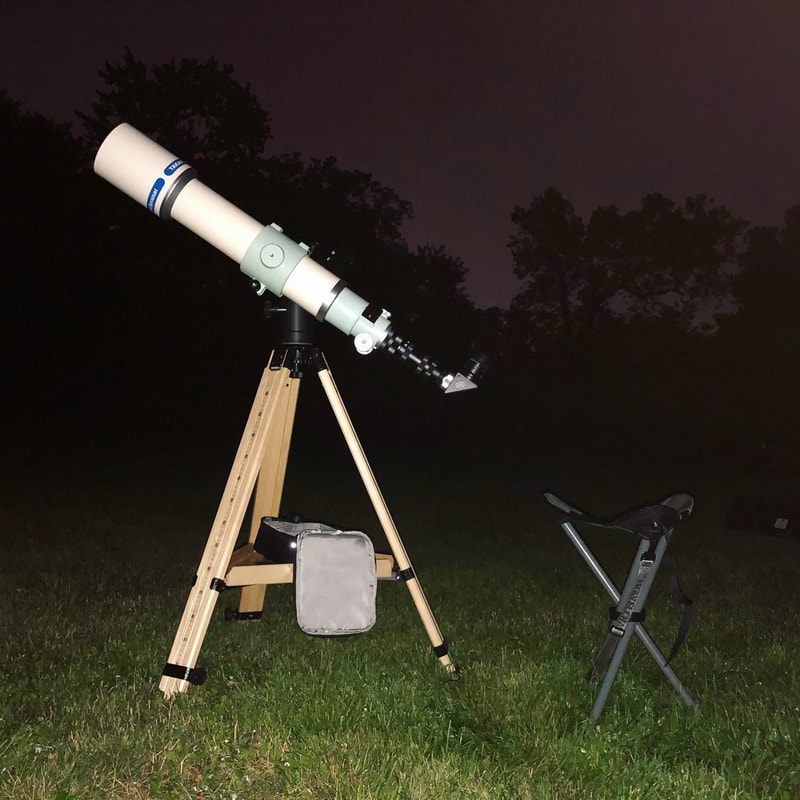
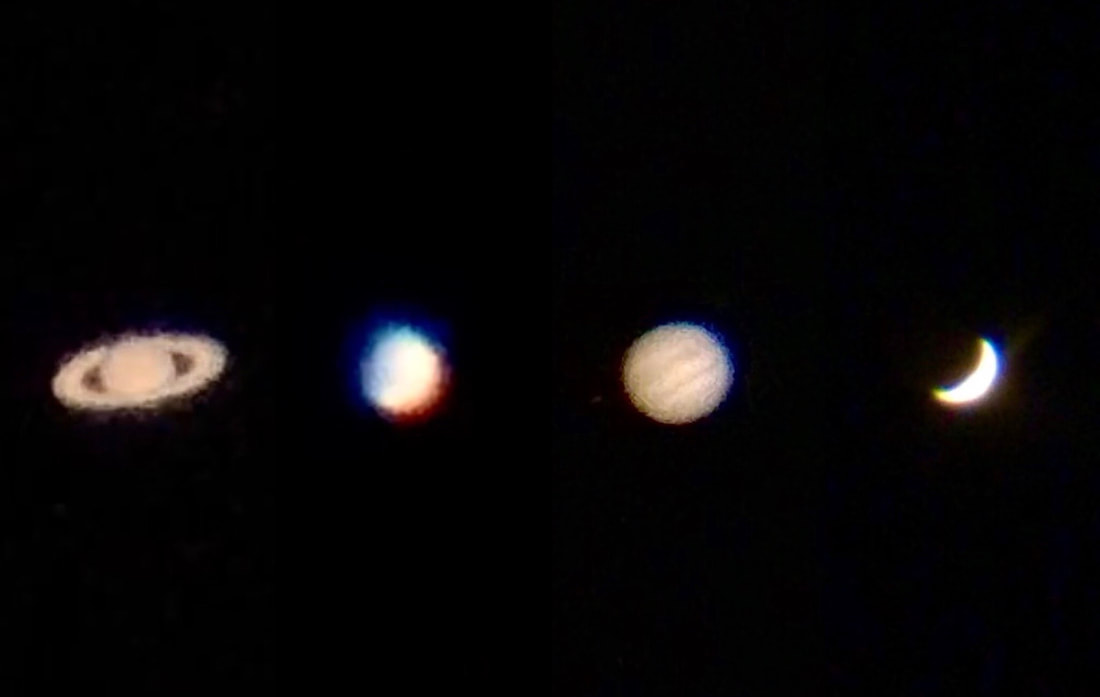
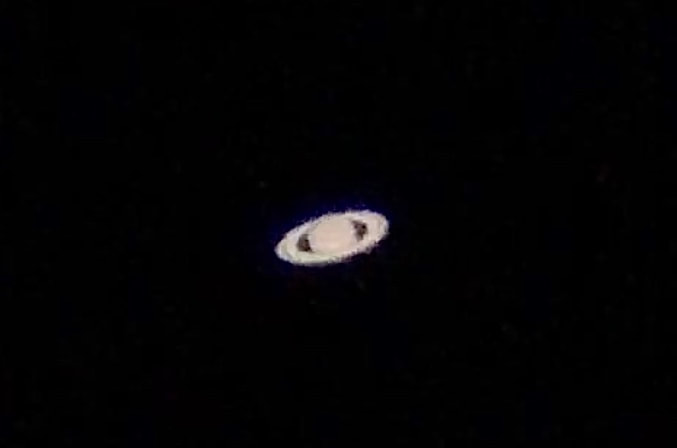

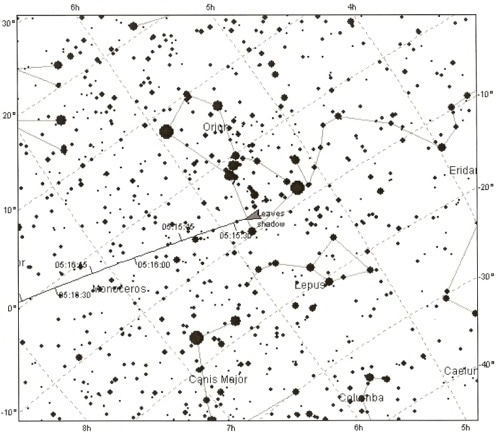
 RSS Feed
RSS Feed